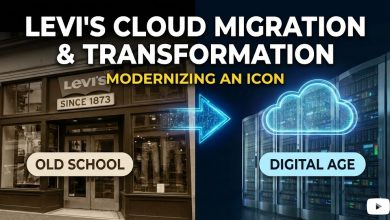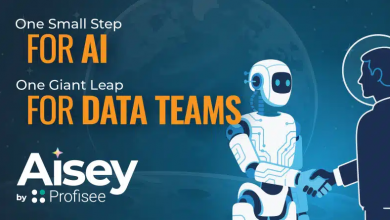Vodafone’s Journey to the Cloud Native, AI-Powered Telco
Vodafone is embracing Cloud Native AI to transform from a Telco to a Techco and build a 5G and IoT digital ecosystem platform.
 Vodafone offers an exemplar case study showcase of Microsoft’s capabilities in Telecomms.
Vodafone offers an exemplar case study showcase of Microsoft’s capabilities in Telecomms.
In the feature video Microsoft’s Worldwide Vice President of Telco & Media, Silvia Candiani, speaks with Scott Petty, Chief Technology Officer of Vodafone about the transformative power of AI in telecommunications and beyond.
Scott shares how Vodafone is using AI to enhance customer experience, increase productivity, drive business transformation, and develop new products and services.
He envisions AI will transform virtually every part of their business and provides examples of how Generative AI is at play today. Get lessons learned from Vodafone’s AI journey, including the importance of data quality, governance, and democratizing access to AI tools.
Transformation Journey: From Telco to Techco
Vodafone has been on a journey from Virtualization to Cloud Native, adopting a Cloud Native approach to drive network automation and build a data platform on the Google Cloud.
This is headlined by a transformation from a Telco to a Techco, to develop a 5G and IoT platform business that realizes new revenue streams well beyond traditional telco services, and they have leveraged Kubernetes to achieve this.
In this TelecomTV interview with Scott Petty, Vodafone’s Director of Digital & IT, they describe how Vodafone has revamped its internal digital development and IT operations to become more efficient, effective and Cloud Native.
This includes adding 7,000 additional software developers to its pan-European R&D team, and an approach called “OneSource,” which is built on open source concepts of open platforms, to which developers contribute capabilities, take capabilities from, and are able to contribute and build software that is used throughout their environment.
Vodafone has invested in a “common infrastructure platform – what they call TaaS, or Telco-as-a-Service – a common cloud-native infrastructure platform that all about developers use to build all of their infrastructure, automate their code, write feature capabilities and contribute that to a set of code repositories that can be used by other developers inside Vodafone.
This approach can be used across both private and public Clouds, the latter which they call upon to cater for large-scale traffic events, such as the iPhone launch day.
Furthermore this multi-cloud capability enables them to use other providers for different functions, they also use Azure and Google for services like analytics for example, and when regulatory or security requirements dictate they use their own internal Cloud. Their TaaS manages the interfaces between them.
It also enables accelerated digital service innovation. Standardizing and automating tooling capabilities like software testing has achieved a 40% increase in developer throughput and a 30% improvement in quality. They’ve built a set of shared and integrated services, a ‘network-as-a-platform’ model, enabling them to build new capabilities and services that sit on top of the common infrastructure layer which share common underlying components, exposed as a set of microservices and APIs.



